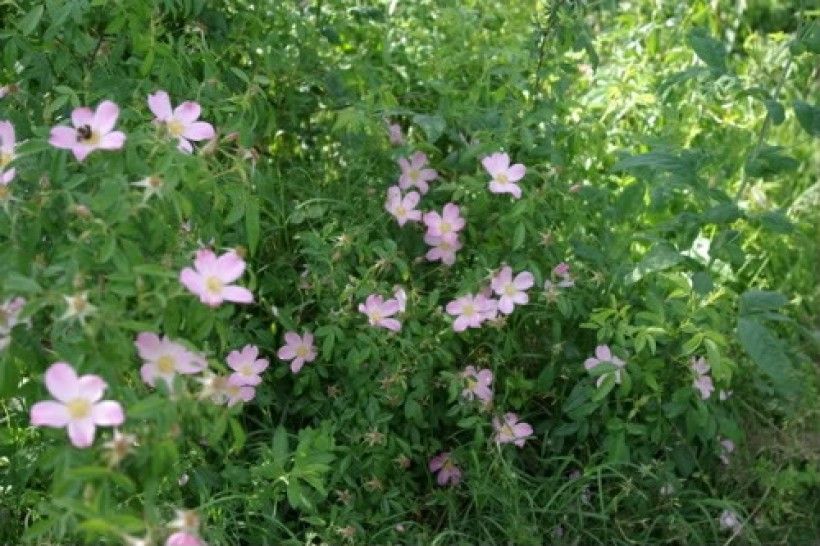Restoration with Roses
By now, we all know that invasives plants are bad for our local ecosystems and should be removed whenever possible.
But when you kill an invasive plant, you are removing structure from a habitat that certain animals need for survival. Whether it’s an herbaceous plant such as garlic mustard or a woody shrub like multiflora rose that is being removed from the landscape, it is imperative that you replant with native plants or shrubs.
Site selection plays an enormous role in choosing the right plant. In addition to considering the amount of sunlight available and the hydrology of a site, take a look at the associated species in the area. Most of our native species have co-evolved in specific communities, and an integral factor in restoring these communities successfully is choosing the right species to plant together.
After years of diligently removing oriental bittersweet and multiflora rose from the Waterloo Mills Preserve, we are now in the process of replanting areas that were once heavily infested with these invasives. While the treated areas did loose cover and shelter during the invasive species removal process, we are now seeing an increase in the species of fauna that frequent the site, as well as a greater diversity of native flora whose seeds lay dormant and suppressed for many years.
One family of shrubs we are beginning to use more frequently in our restoration efforts is our native roses: pasture rose (Rosacarolina), swamp rose (Rosa palustris), and wild rose (Rosa virginiana). Each of these species has beautiful flowers that bloom during the summer months and provide a valuable pollen source for most of our native, long-tongued bees. The fruit, rose hips, also offer a valuable food source for small mammals and bird species which, in turn, help to disperse the seeds of the plant.
